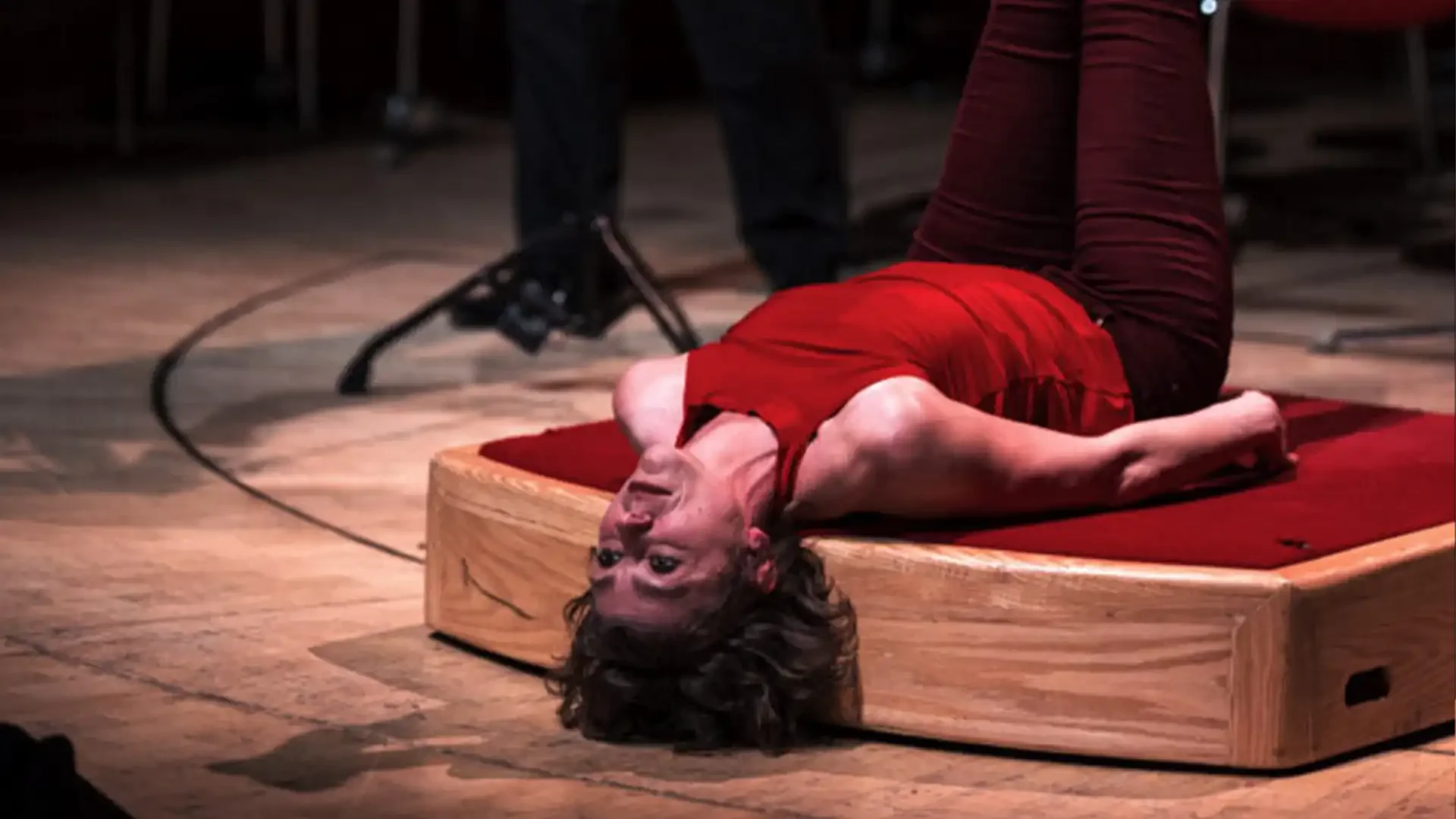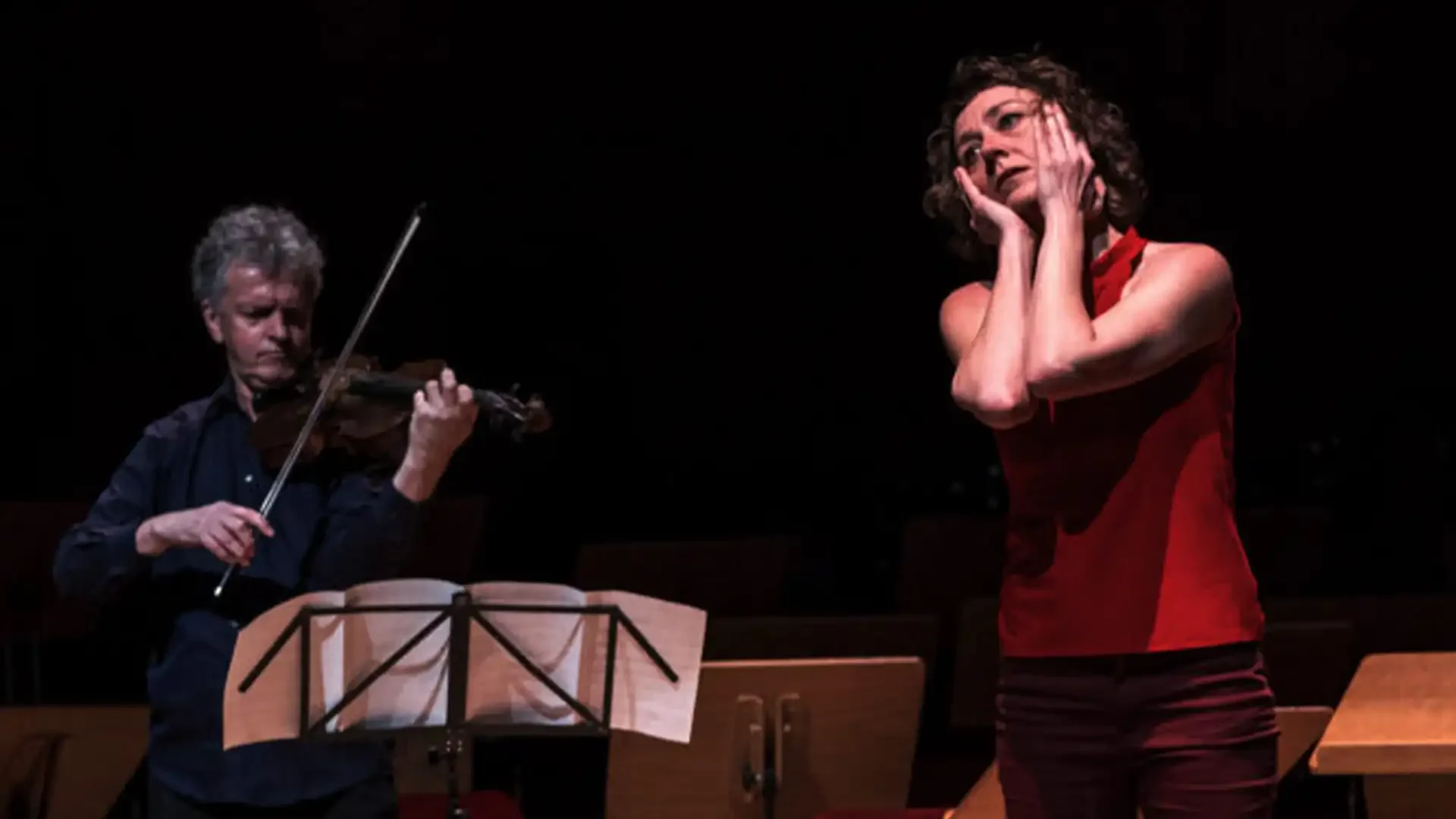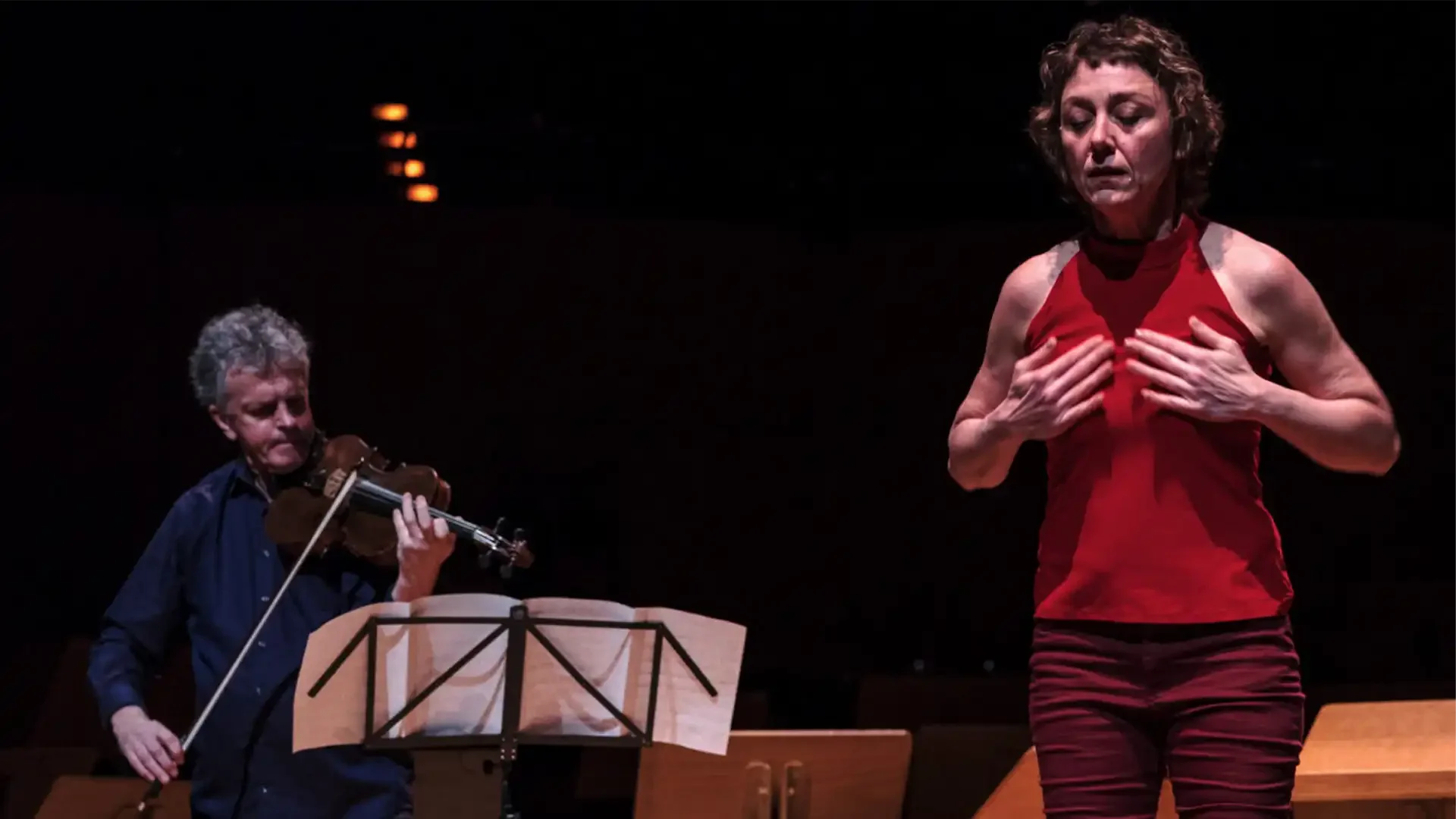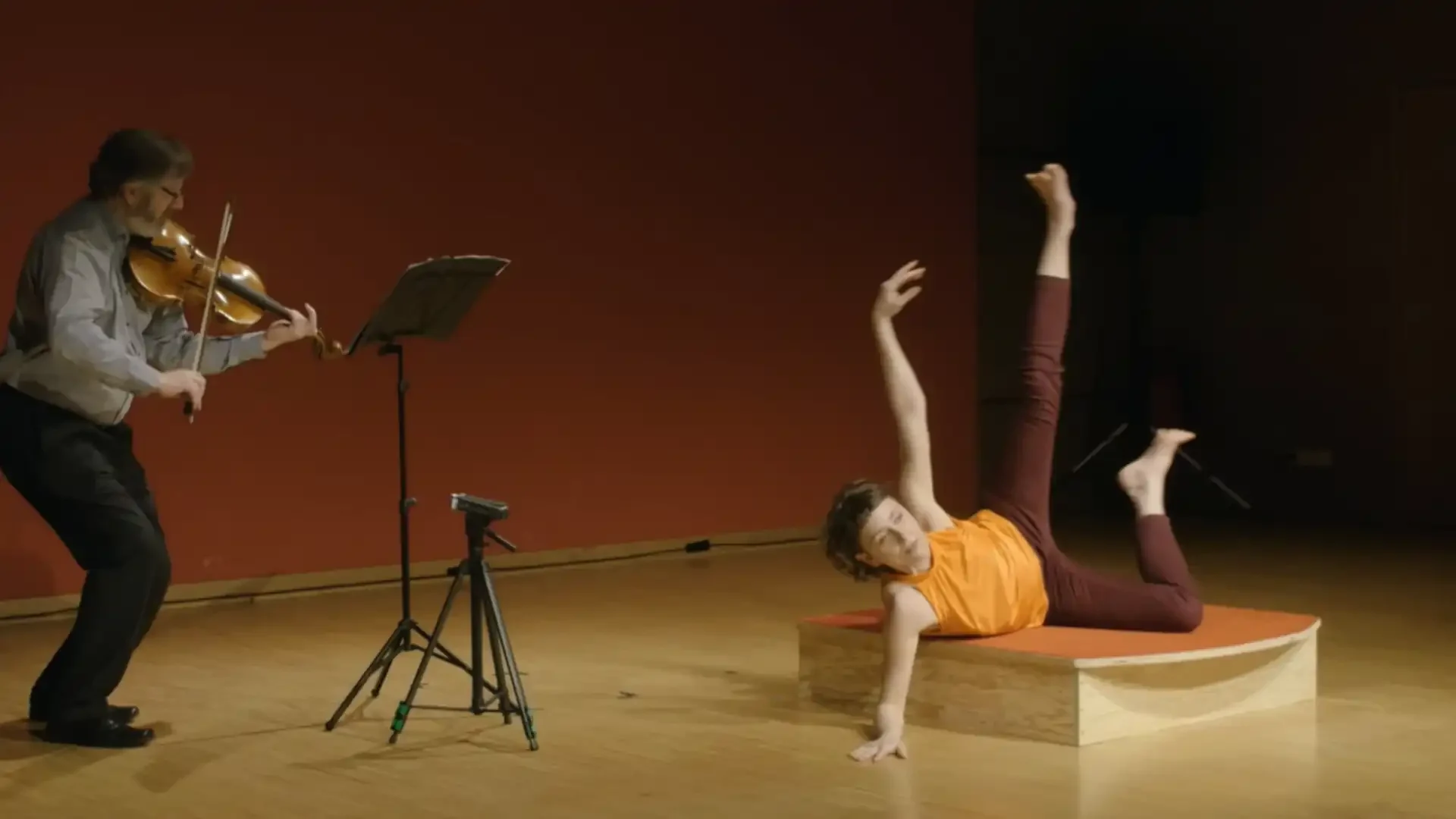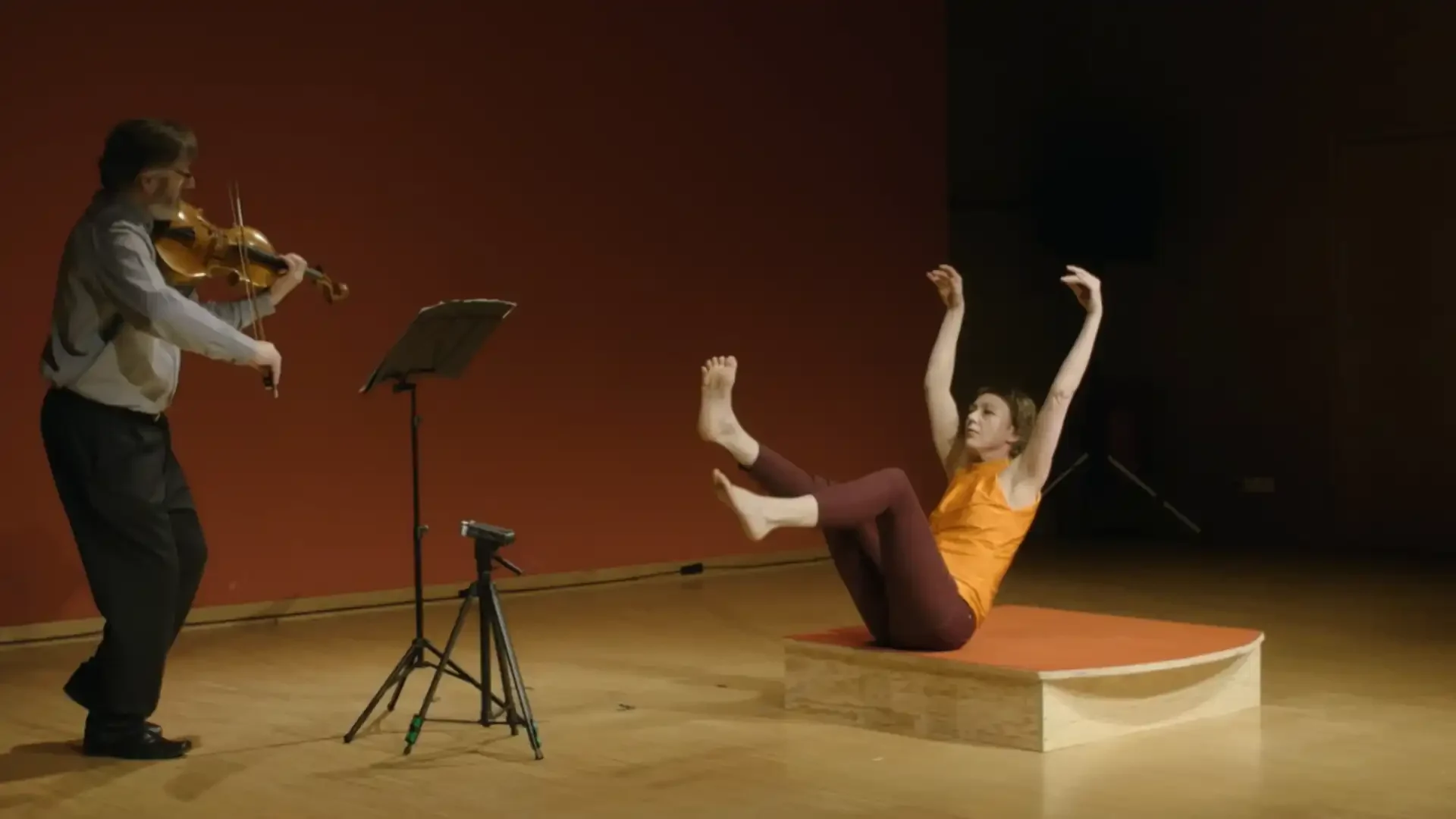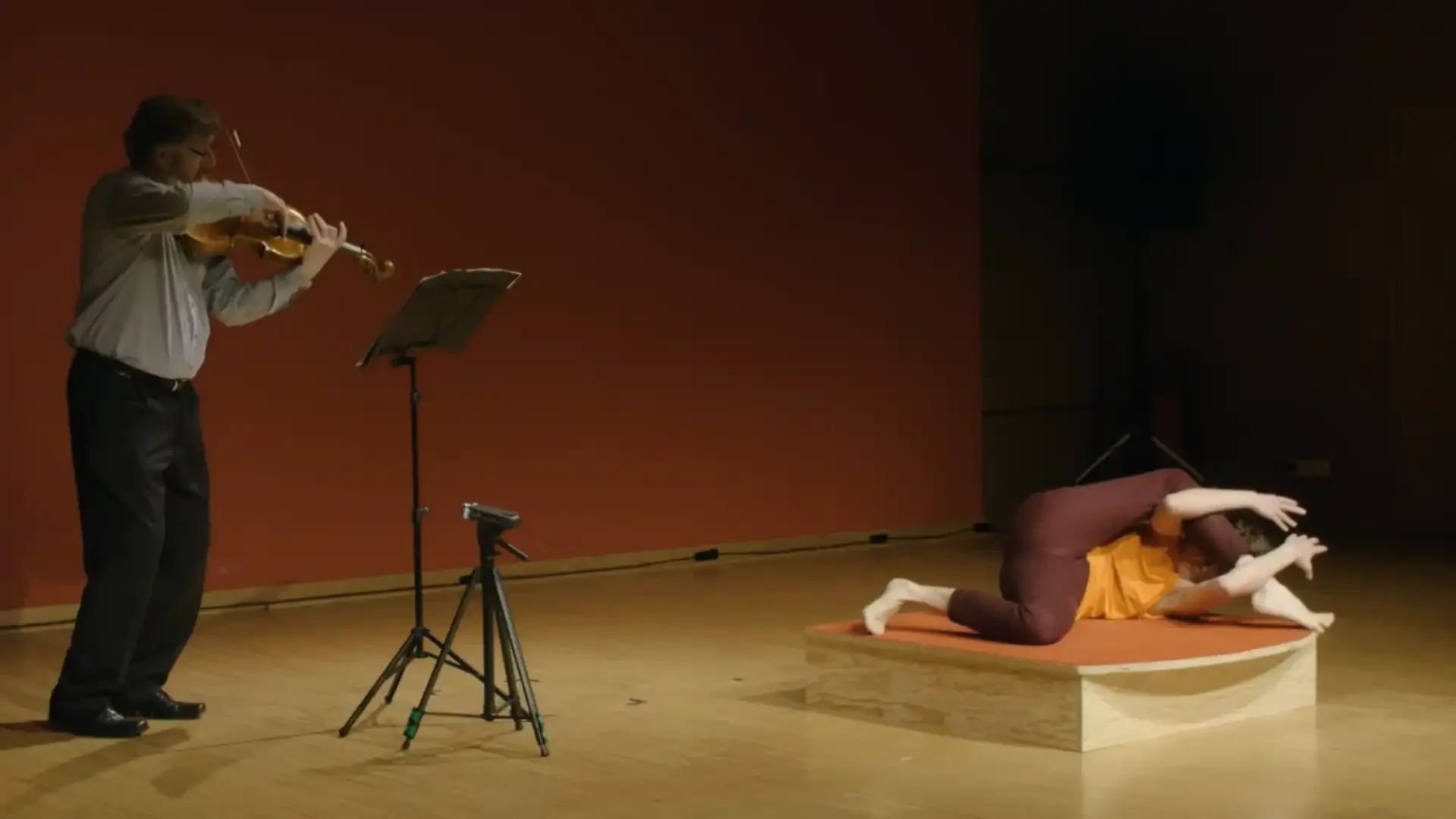Britta Lieberknecht choreographs solos to sonatas by Bernd Alois Zimmermann
The conductor’s podium belongs to the dancer. It is her stage. The orchestra seats are empty, the podium is free. Only the dancer and a soloist perform. She does the opposite of what a conductor would do in this position: she does not direct musicians and their instruments with her gestures and postures; instead, she allows herself to be moved by what one musician plays in one case and another musician plays in the other. This fundamental idea is shared by the two solos that Britta Lieberknecht choreographed for the Acht Brücken Festival in Cologne to sonatas by Bernd Alois Zimmermann, presented on the same day but in two different contexts. Both open concert programs before still empty orchestra seats with short and concentrated pieces, each setting a different mood despite the similarity in formal approach, pointing to what follows.
Barbara Fuchs opens with the Sonata for Viola Solo “… to the Song of an Angel” together with violist Matthias Buchholz, a program named after this sonata at the Cologne University of Music and Dance in the Cologne Philharmonie. Neus Barcons Roca dances with violinist Hannah Weirich at the beginning of the concert “Metamorphosis” of the ensemble Musikfabrik in the large broadcast hall of the WDR broadcasting house: “Sonata for Solo Violin” from 1951. Both perform barefoot, as if in rehearsal attire: Neus Barcons Roca in blue sweatpants and a red shirt, Hannah Weirich in black leggings and a dark t-shirt. Each takes her place without fuss, a breath, a glance: and each begins. The dancer winds up and down, swings around her own longitudinal axis, flings her arms from right to left – all spiral movements of different dynamics. If one wishes, individual gestures can be assigned to specific motifs of the violin, but only point by point. For moments, the dancer and the violinist are one in tempo and dynamics. Choreographer Britta Lieberknecht is not interested in illustrating music; she does not want to tell a story; she wants to explore what movement the music evokes in the body, how the dance can be an equal counterpart to the music. Since every human movement also contains emotion, but its physical expression does not have a fixed meaning, the 12 minutes are captivating. Despite all abstraction, the choreography develops drama. By the end of the concert, one also understands it as a counterpart to the experimental silent film “Metamorphosis” from 1954, for which Zimmermann wrote the music and which is shown with live music. Atmospheres, moods that do not need a linear narrative or language to have an effect.
For the second Zimmermann solo that Britta Lieberknecht choreographed for the festival, “… to the Song of an Angel,” everything said about the relationship between dance and music applies, but here the emotion is tangible: sorrow, loss. The sonata was created in 1955 as a requiem after the death of the composer’s newborn daughter. At the beginning, Barbara Fuchs places her hands on the back of violist Matthias Buchholz. Does she sense his breath, his movement, or is she a gentle guide, an angel accompanying him? Bernd Alois Zimmermann, who was shaped by Christian and Catholic influences and even wanted to study theology, had a deep spiritual connection to angelic concepts. When the dancer separates from the musician and moves into her small confined space, she takes more of the inner vibration with her than the outer movement she has sensed. She first yields to gravity and lies down on the podium, spreads her arms, stretches her legs toward the sky, crosses them, rubs her feet together: the choreographer, who as an atheist is not close to Christian thought and imagery, hints at crucifix symbolism, an upside-down crucifixion. Later, the dancer will straighten up, folding her hands in front of her chest as if in prayer, turning and twisting. She will stand in a bent position with her hands spread at her ears, perhaps listening to the sound of a distant angel. Pain and suffering are much more tangible as emotions here than in the other solo – yet Britta Lieberknecht also avoids clichés in this piece. As in the second choreography, she aims less to find an external form for feeling than to sense the inner movement that the music evokes. In doing so, she approaches mysticism, which seeks the highest religious experience within and ultimately in abstraction. Representing this convergence of deep emotional experience and complete abstraction is often a balancing act between spiritual kitsch and rigid, cold formalism. But not here. In her execution, Barbara Fuchs sensitively manages to convey inner movement, capturing the delicacy of deep feelings without overstating or exaggerating them with grand expressive gestures. As she slowly swings her arms and hands in small waves after the last note, the audience is as still and focused as she is, listening to the subtle song of an angel. Whether and when this solo will be seen again is uncertain. Both solos were commissioned works for the Bernd Alois Zimmermann focus of the Acht Brücken Festival, where Britta Lieberknecht was invited because she had already choreographed “Space for Your Imagination” to music by Zimmermann in 2016. At least there is hope for further performances due to the collaboration with the Ensemble Musikfabrik. It would be wonderful if these puristic, concentrated, and touching solos could reach a much larger audience.
